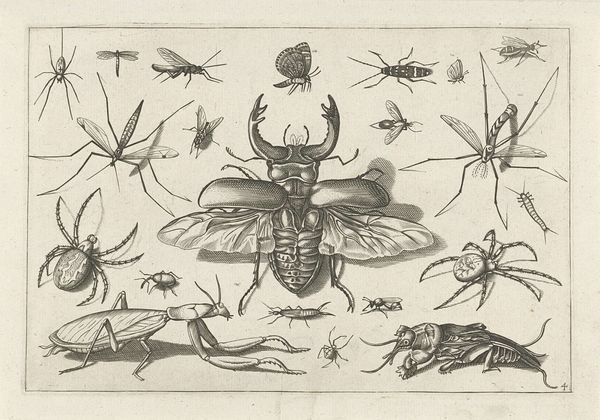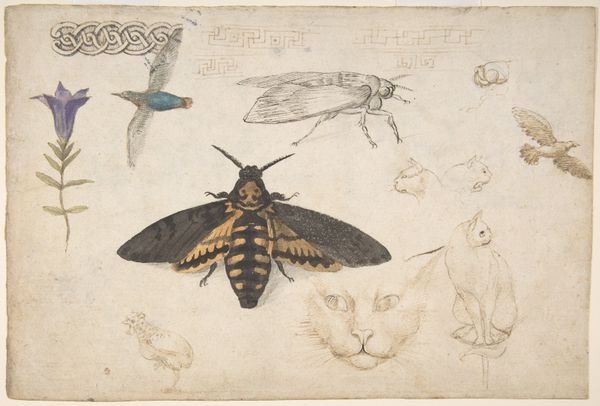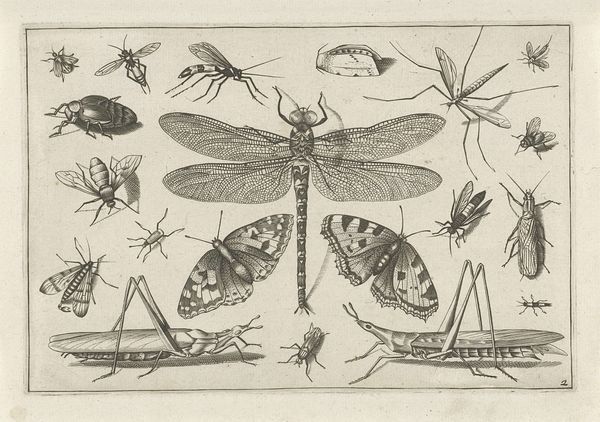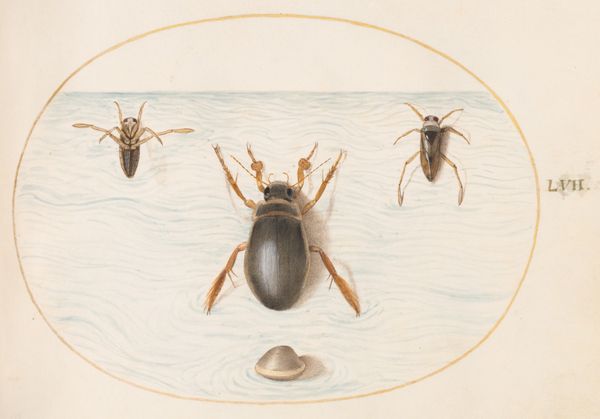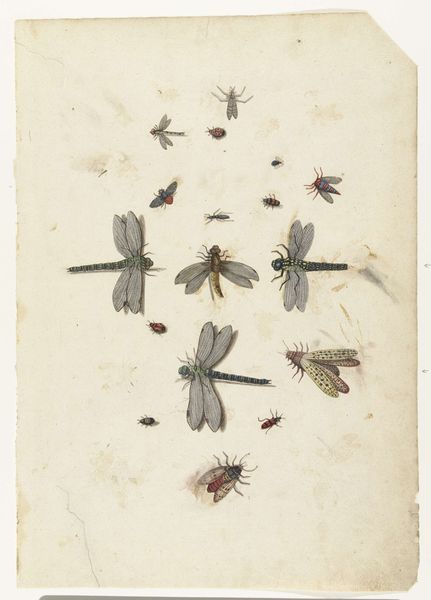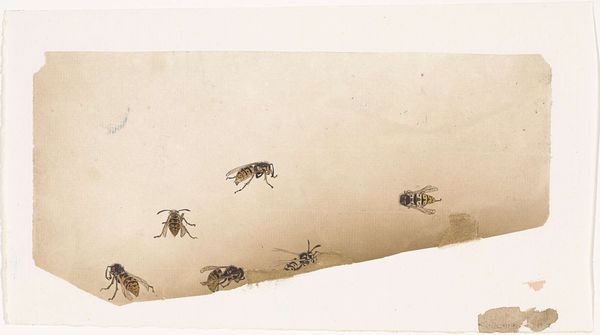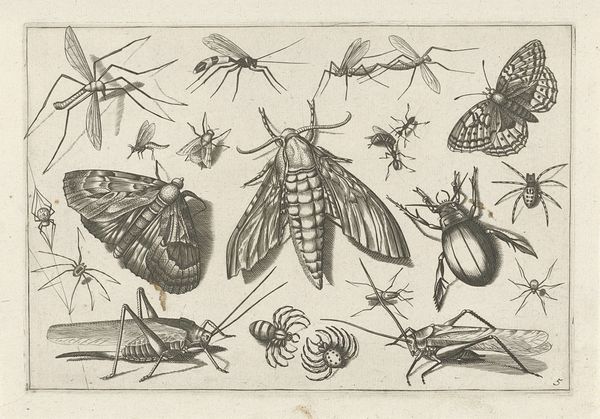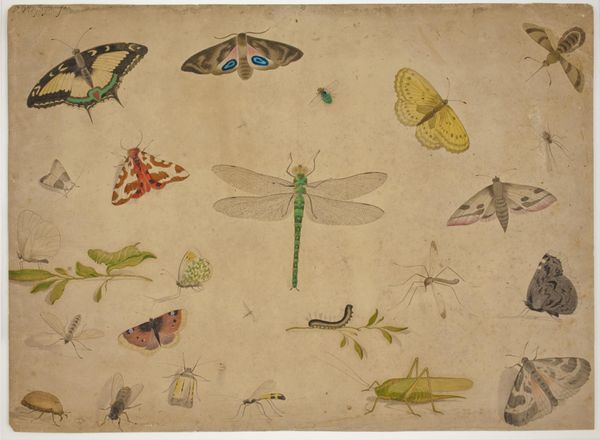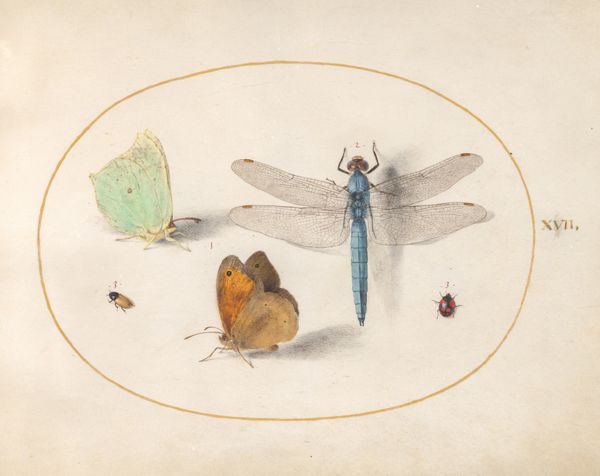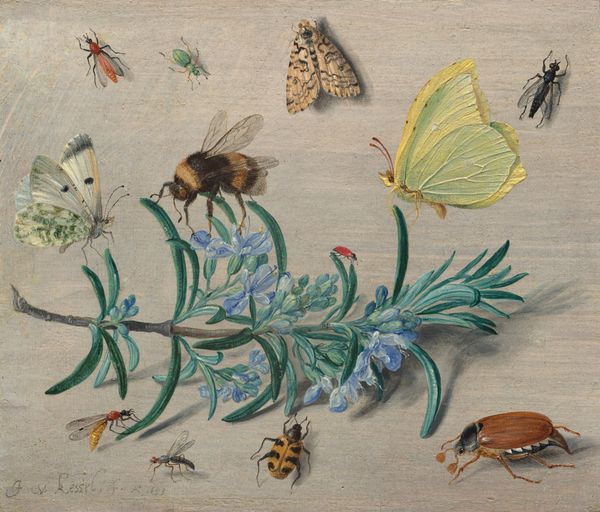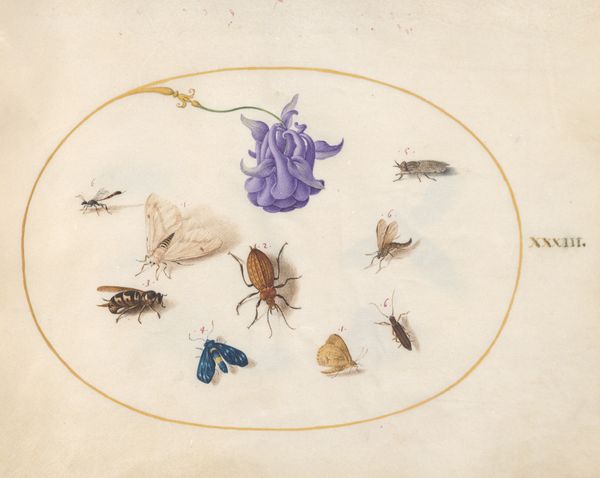
drawing, print, paper, watercolor, ink
#
drawing
# print
#
mannerism
#
figuration
#
paper
#
11_renaissance
#
watercolor
#
ink
#
watercolour illustration
#
miniature
#
watercolor
Dimensions: 4 3/4 x 6 13/16 in. (12 x 17.3 cm)
Copyright: Public Domain
Curator: Here we have "Insects and the Head of a Wind God," a piece attributed to Joris Hoefnagel, dating back to around 1590-1600. It's a beautiful example of late Mannerism, rendered in ink and watercolor on paper. Editor: My first impression is one of meticulous detail, and maybe a touch unsettling? The scale is skewed; this stag beetle is huge, almost menacing amidst these other exquisitely rendered, yet relatively smaller creatures. Curator: The naturalism combined with the allegorical elements is typical of the period. These weren't just scientific illustrations; they reflected a worldview. Natural history collections were becoming popular, as were cabinets of curiosity—sites of wealthy display. Editor: Precisely. It reflects that transition from the handcrafting of individual illustrations to the systematized printing processes that would inform encyclopedias. Hoefnagel clearly put great effort into representing these creatures, but with a sort of artisan’s touch that precedes scientific objectivity. I can almost feel the weight of that beetle through the layers of watercolor. Curator: Exactly. Consider the implications of displaying such works! Patrons displayed this in private collections as conversation starters to further engage the scholarly culture of the time. These served a function for education, but also for cementing the social elite’s control of knowledge. Editor: And what of the insects themselves as subject matter? It feels like he elevates the normally overlooked to the level of high art, defying any rigid hierarchy of what is aesthetically worthy. Curator: A provocative point! Insect imagery certainly circulated during periods of unrest. Look to other Mannerist examples, like the engravings of Goltzius depicting the fall of man using insects, signifying sin. Editor: It is also fascinating the inscription at the bottom, along with the bizarre miniature head near the bottom-center. Hoefnagel's choices around what to feature so prominently in relation to the "insignificant" beings provides for an intense visual study of symbolic order and hierarchy. The use of gold lettering too, emphasizes that value beyond a solely scientific intention. Curator: Hoefnagel was clearly operating in a context of shifting power dynamics—intellectual, political, even artistic. Understanding the work requires we look beyond aesthetics. Editor: And attending to the processes, materials, and societal dynamics behind this illustration, the insect here challenges not just the notion of artistic worth, but compels us to probe the human ambitions woven into every artistic process. Curator: Thank you for that thoughtful material reflection, perhaps our listeners will have that to keep in mind when moving forward in their visit today.
Comments
No comments
Be the first to comment and join the conversation on the ultimate creative platform.

